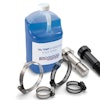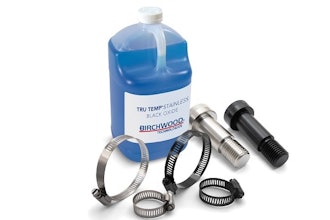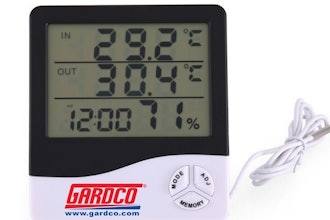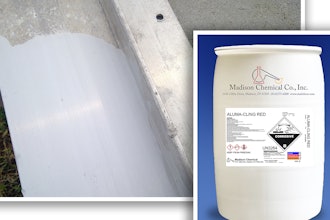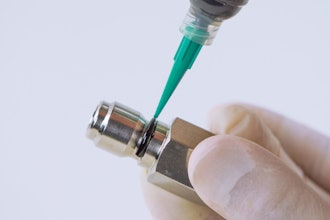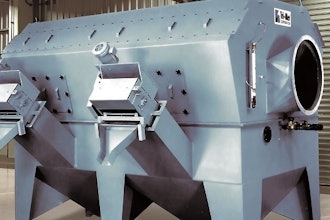
An original equipment manufacturer (OEM) noticed something wasn’t quite right in their automotive paint shop after holiday breaks. Certain colors or metallics that previously provided Class A, new car finishes went flat or lacked luster when the factory resumed production.
The now defective paint had to be cleared out of their circulation system. In addition to hundreds of gallons of waste, many parts had to be redone or discarded.
Why was this happening? The automotive OEM asked liquid finishing experts in Graco’s Industrial Products Division to figure it out. What they learned equipped them to go back to the OEM to teach them about paint degradation and how to solve their post-holiday problem.
Graco recently published their findings in a five-page white paper titled “Paint Degradation in Paint Circulation Systems.” Blake Erickson, the white paper’s author and Graco’s global product manager for circulation and supply pumps, recently answered our questions about the unique research.
Q: What is paint degradation and how does it happen?
BE: Paint degradation is the change in light reflection on a finished surface due to changes in the coating’s ability to reflect light. It usually happens when you have metallic particles your paint. As they repeatedly move through a circulation system, the particles crash together and deform. As a result, the light reflecting properties of the paint change – usually not in a good way.
Q: Why is the automotive industry a prime candidate for this problem?
BE: To achieve that really classy new car finish, automotive OEMs and their subsidiaries use metallics and special colors. Those coatings are prone to shearing issues that can lead to paint degradation.
When we’re trying to figure out if an automotive factory has paint degradation concerns, we’ll ask whether they’re happy with things like color match or paint quality. We’ll also ask about wasted material and rework of vehicles. In plants where they have this issue, you might see a line of cars or parts that have to be sanded down and sent back through the finishing line.
Q: How much can paint degradation cost a factory?
BE: It depends on a lot of factors, but a big one is paint waste. Let’s say your paint circulation system has a 250-gallon tote, and there's another 100 gallons in the line itself. That's 350 gallons. The price of your metallic paint or special color is about $100 to $125 a gallon. Having to dispose of that particular color can cost you $35,000 to $43,750. Multiply that out over a couple of colors in that plant, and you're finding a huge expense.
Q: When you were asked to look into this problem, how did you approach it?
BE: We did a lot of testing and realized we needed to get very scientific about it, so we came up with a process to figure out where the problem was coming from. Along the way, we learned a lot about paint degradation.
Q: Can you summarize what you learned in three sentences or less?
BE: Paint shear happens. Proper circulation system design and active management techniques can keep it from leading to paint degradation and waste. To learn more, download the white paper from graco.com/paint-degradation.
Q: Who could benefit from downloading your white paper?
BE: Anyone who needs to know how to keep making good, Class A finishes, while avoiding the high disposal costs of paint that no longer produces the appearance desired
Q: BE: What is Graco doing to prevent paint degradation for its customers?
We’ve upgraded seals and checks in our circulation pumps, designed a low shear back pressure regulator (BPR) with a unique flow path geometry, and developed a non-production or sleep mode in our Intelligent Paint Kitchen System.
The white paper, Paint Degradation in Paint Circulation Systems, further explains what paint degradation is, how to detect it and to mitigate its effects. You can download the free, five-page guide at graco.com/paint-degradation.


